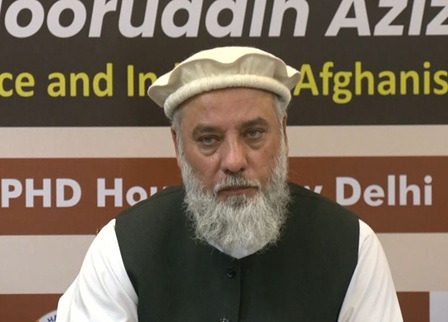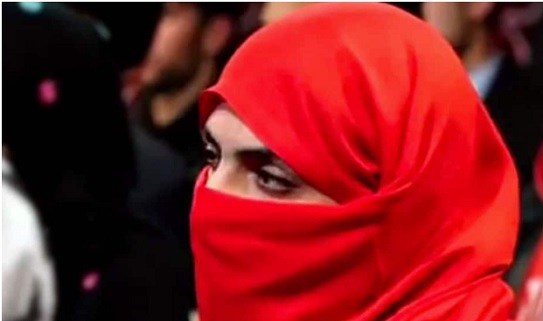
By: Saleem Payenda
Afghanistan is still ranked as the worst place in the world to be a woman. Despite the Afghan government and international donor efforts since 2001 to educate girls, an estimated two-thirds of Afghan girls do not attend school. Eighty-seven percent of Afghan women are illiterate, while 70-80 percent face forced marriage, many before the age of 16. In a country racked by decades of war and a dearth of resources, there is a story of Nasima Bari an author and journalist who engages her platform to shine a light on women’s experiences and advocate for their empowerment. She shows how women in Afghanistan are struggling to live with dignity. It also highlights how, in the face of little governmental support and dwindling international aid, women are stepping in to help one another.
Nasima Bari is the author of feminist works such as ‘The Monster’s Shadow’ and ‘The Clay Oil Lamp’, her literary works, writings, presentations, and civil campaigns touch on issues faced by ordinary Afghan women; with themes including early and forced marriages, as well as that of violence. As in all war-torn societies, women suffer disproportionately. Nasima’s country is still ranked as the worst place in the world to be a woman. A placein where Ms. Bari has initiated a publication of Amail Newspaper for arising and publicizing the voices of women and girls who are discriminated in many ways, for the ‘crime’ of being born as a girl. She works where women and girls are banned from going to school or studying, banned from working, banned from leaving the house without a male chaperone, banned from showing their skin in public, banned from accessing healthcare delivered by men (with women forbidden from working, healthcare is virtually inaccessible), and banned from being involved in politics or speaking publicly. Nasima’s works show that there are many other ways in which basic human rights are denied to them. Women are essentially invisible in public life, imprisoned in their homes. In southern Afghanistan where Mrs. Bari was born, the residents are ordered to cover their ground and first-floor windows so women inside could not be seen from the street. If a woman left the house, it is in a full-body veil (burqa), accompanied by a male relative: she has no independence. If she disobeyed these discriminatory laws, punishments are harsh. A woman could be flogged for showing an inch or two of skin under her full-body burqa, beaten for attempting to study, stoned to death if she is found guilty of adultery -where rape and violence against women and girls is rife; where Afghan women are brutalized by the law and in nearly every aspect of their daily lives.
In spite of all the difficulties, threats, sanctions and discriminations. Nasima stood to change the fabric of this existing Afghan society and has initiated a publication and women’s rights campaigns apart from house chores. She has been engaged in social and civil activities in Helmand province in a remote area in Afghanistan where every second a bullet takes the lives of her people.
Literary works—way to change cum
The Monster’s Shadow
The Monster’s Shadow is one of the most important, finest and the best of her literary works. This book illustrates the problems, threats, and narratives of women in the traditional society of Afghanistan. It is a collection of short stories and the other one narrates the status and problems women face in their life.
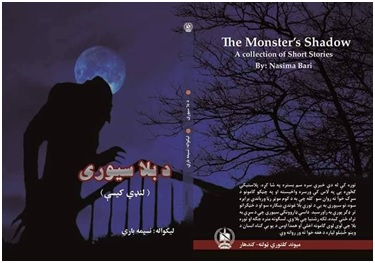 The Monster’s Shadow finds it in a “groaned world” where darkness and light play with a generation in Afghanistan. In this engrossing work, the heart survives its, “twinned urge to leave and pining to return of her identity in male-dominated society”—The Monster’s Shadow addresses topics from jailed dreams of love and healing to racism and politics to torture. Sixteenstirringstories explores the pain of a generation through politics, borders, obsolete customs of society, gender-based violence and deprivation of women from resources and lack of access to their primary demands. The Monster’s Shadow, names all of the stories that have occurred in the real world of Afghan women.
The Monster’s Shadow finds it in a “groaned world” where darkness and light play with a generation in Afghanistan. In this engrossing work, the heart survives its, “twinned urge to leave and pining to return of her identity in male-dominated society”—The Monster’s Shadow addresses topics from jailed dreams of love and healing to racism and politics to torture. Sixteenstirringstories explores the pain of a generation through politics, borders, obsolete customs of society, gender-based violence and deprivation of women from resources and lack of access to their primary demands. The Monster’s Shadow, names all of the stories that have occurred in the real world of Afghan women.
Painful tales that explore every line of a world of suffering and frustration for Afghan women; the black heart, monster’s shadow, the fairy house, jailed hopes, black hands, behind the veil, the theft of light, the green is the color of love and respect to women are the titles of stories which explore the unseen and untold aspects of a generation’s life in ashes.The stories of … The Monster’s Shadowask tough questions and envision answers that encompass not just a hypothetical future but also the present’s trouble extrapolated to a nadir. If the people at the center of these stories go dark, it’s in the hope that better decisions will arise. After all she hopes, “unreal people and events and traditions change the world all the time.” Totally, Women’s empowerment is tucked inside a message of Nasima’s literary works.
The traitor
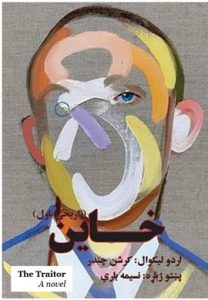 The traitor novel was written (Ghaddaar) in Urdu by the famous Indian Urdu and Hindi legend writer Krishan Chandra and Nasima translated it as “ The Traitor” in Pashto language, it is a historical novel that is very popular in Urdu literature and an anecdotal story of the distribution of semi-arid India.
The traitor novel was written (Ghaddaar) in Urdu by the famous Indian Urdu and Hindi legend writer Krishan Chandra and Nasima translated it as “ The Traitor” in Pashto language, it is a historical novel that is very popular in Urdu literature and an anecdotal story of the distribution of semi-arid India.
The traitor begins with a delicately woven romance between an unmarried Muslim girl, and her married Hindu lover. But the world outside is being torn asunder and Krishan Chander shows how love, brotherhood, and humanity swiftly turn into redundant emotions, as permanent lines are drawn between two nations.
Traitor …. a word that acquires a new meaning and a sharper edge in the times we live in, Krishan Chander’s classic novel seem especially relevant as we mark the 70th anniversary of the annus horribilis – that was the year 1947. In this novel the author sees this division and religious extremism from a human angle, and rightly blames both sides, blaming his blasphemy and blatant political trade for the oppressive politics and despotism of his hard-working politicians.
Tragic because it tells us that we as a people have not changed or evolved as much as we should have in the course of seventy years of independence, that the communal ill-will that marred our centuries-old tradition of pluralism has not entirely left our psyches as it ideally ought to have with our coming of age as a nation and as a people, that the lava of communal hatred still erupts now and again like pus from a festering wound, and that any deviation from a majoritarian discourse is still seen as a sign of betrayal, and the hyper-nationalism of the mob continues to sway popular opinion.
In a purely literary sense, Ghaddaar is significant because it tells us, yet again, that a truly good work of literature is one that rises above its time and circumstance and speaks to us across time and circumstance and makes common cause with its readers when it speaks of universal concerns, such as cruelty or humanism, barbarism or meanness of spirit or the human heart’s infinite capacity to love.
Amail Newspaper
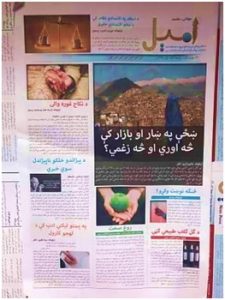 The paper covers local and rural issues in southern Afghanistan, Helmand, and Kandahar, Afghan cities with strong patriarchal attitudes to women’s rights. When Nasima started, the paper was printed fortnightly, and hand-delivered by the reporters who were out in the villages gathering stories. Now, this is the first publishing in southern Afghanistan with a large number of readers.
The paper covers local and rural issues in southern Afghanistan, Helmand, and Kandahar, Afghan cities with strong patriarchal attitudes to women’s rights. When Nasima started, the paper was printed fortnightly, and hand-delivered by the reporters who were out in the villages gathering stories. Now, this is the first publishing in southern Afghanistan with a large number of readers.
Amail is the only newspaper published by a woman for women that has raised hopes for afghan women to express their problems in this way and to attract the attention of the government and the people. For the afghan girl staffers, working at the newspaper has transformed their lives. “It is my dream job,” says rural Afghan girl. Nasima says, “The villagers were not supportive at first, but now they say, “You’re the first woman from our village to do this kind of work.” They cut out my articles and frame them and put them up on the walls. Young girls in the village come to me and say, “Sister, we want to be like you.” It makes me very proud.”
Today, Nasima is known as a female champion and Afghanistan’s Inspirational Womenmodel for thousands of Afghan women and girls, particularly in southern Afghanistan. She has been recognized by the Ministry of Information and Culture for her literary works and is the recipient of the Global Youth Leadership Awards (2019), as well as the Asia Inspiration Award (2018).
About the Author
Saleem Payenda
Saleem Payenda is a postgraduate student of Post-War Diplomacy and Foreign Policy at the University of Mysore. and the board member of Afghanistan Analysts Network, Kabul. Writes on Afghanistan’s foreign policy, state-building, socio-political, economic and human rights-related issues. He tweets via @saleempayenda and he can be contacted at [email protected]






